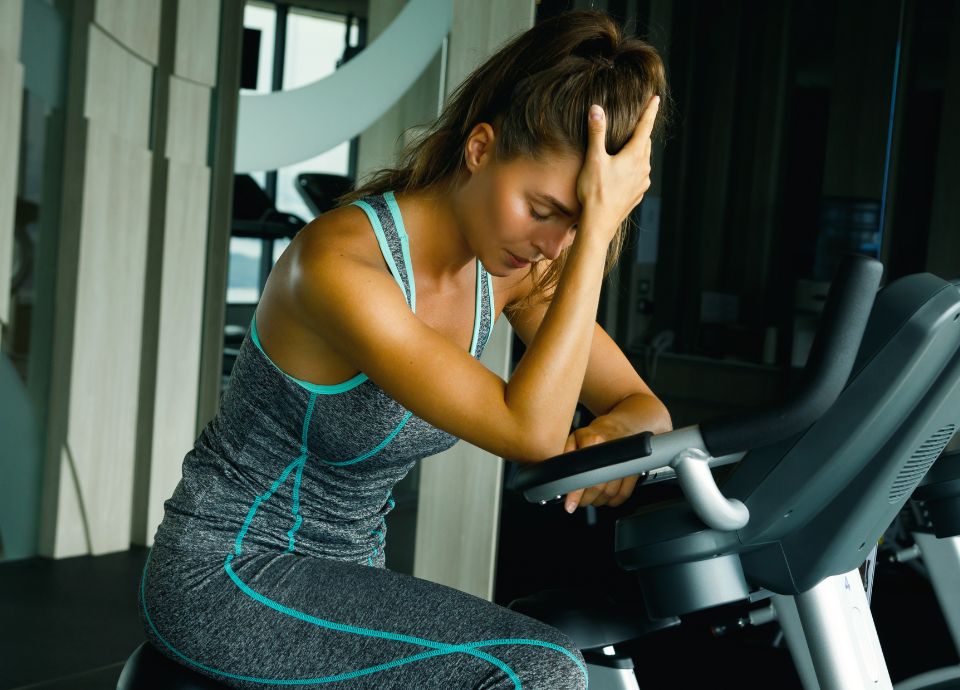Physical Tests for Headaches: Useful?
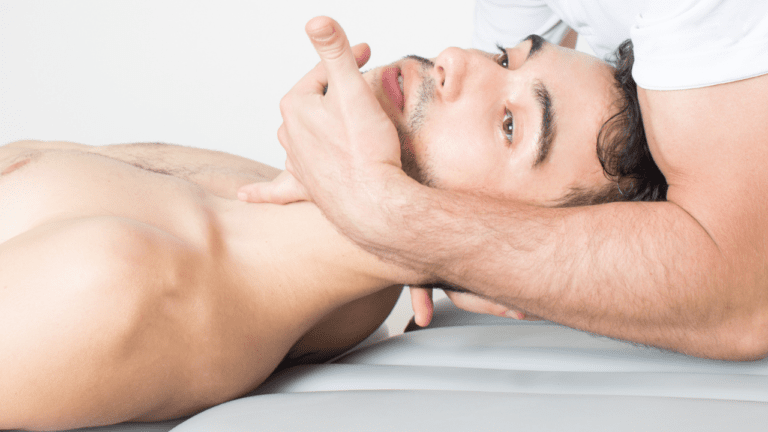
Headache and impairments in cervical function
In the last decades, several publications appeared on the relationship between impairments in cervical spine function and different types of headaches. The cervical functions most studied and described are changes in head position, mobility, and the neck flexors’ muscular endurance. A Delphi study among experts in the field of physical treatment of headaches proposed a variety of physical tests for tension-type headaches, migraine, and cervicogenic headaches (Luedtke 2016).
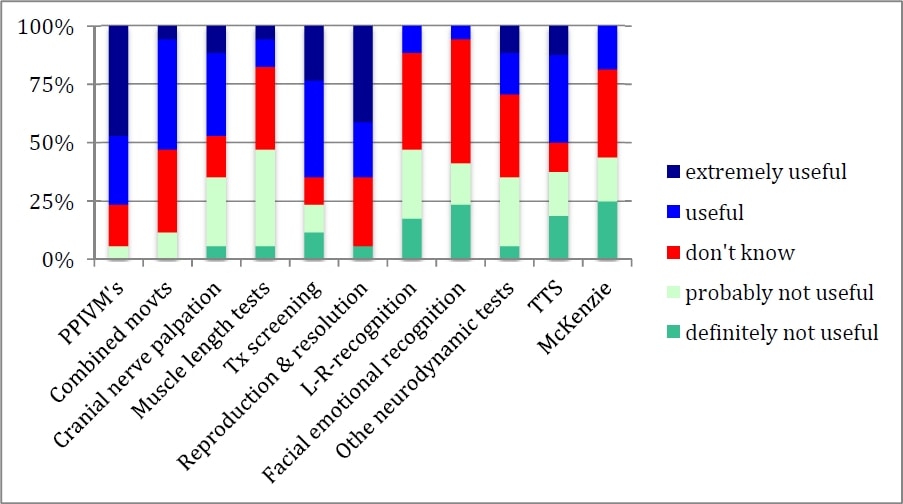
PPIVMs= passive physiological intervertebral movements; Tx=thoracic; L-R=left-right; TTS= total tenderness score.
However, recently published systematic reviews (Liang 2019, Anarte-Lazo 2021) show that evidence is low to determine a relationship between a decline in function (mobility, muscle strength, posture) in and between different types of headache such as migraine, tension-type headache (TTH) and cervicogenic headache. Liang et al. (2019) noted that a lack of association between headache features and forward head posture (FHP) or ROM in TTH, and flexion-rotation test (FRT) in migraine, support the possibility that cervical impairments can sometimes be unrelated to headache and, in some participants, be incidental features or co-existing cervical disorders. In addition, Anarte Lazo et al. (2021) concluded that impairments in cervical spine function (FRT and muscle endurance) are insufficient to provide a definitive diagnosis of cervicogenic headache versus migraine.
Although the FRT is not useful for discriminating between types of headaches, this test showed significant differences in the range of motion of the upper cervical spine in participants with TTH, migraine, and cervicogenic headaches compared to healthy participants. However, the FRT shows a similar decrease in cervical ROM in patients with neck pain. (Dunning et al. 2012 Rodriquez-Sanz 2021).
Assessment of cervical function in patients is useful in patients with headaches, but these findings have to be interpreted carefully.
Headache Treatment in Clinical Practice
Learn how to Diagnose & Treat Patients with Headaches
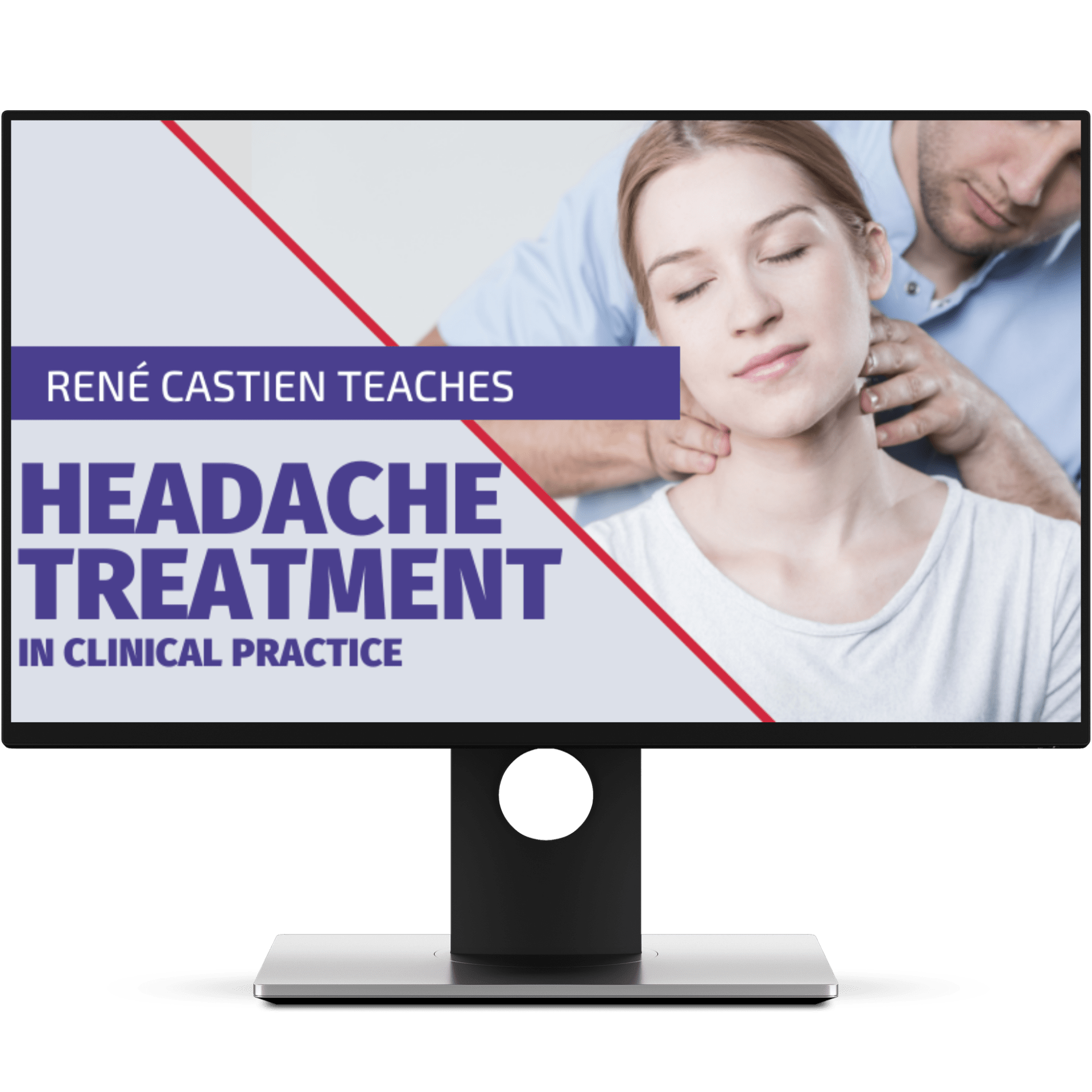
Headache and referred pain.
The types of headaches that are of interest for physical therapy interventions, such as tension-type headaches, migraine, and cervicogenic headaches, are frequently associated with neck pain (Castien & De Hertogh, 2019). This association between neck pain and headache can be explained by the convergence of cervical ánd trigeminal nociceptive input on the C1 and C2 dorsal horn within the trigeminal cervical complex and provides a neuro-anatomical basis for the clinical phenomenon of referred pain from the neck to the head and vice versa.
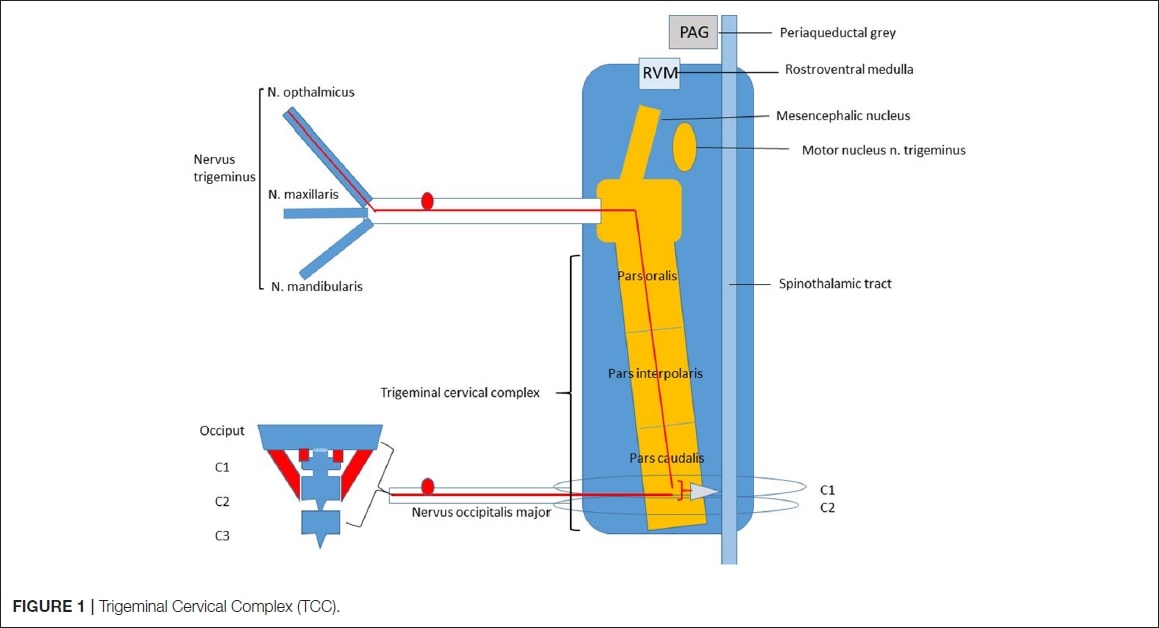
Application of nociceptive afferent stimuli -by giving a firm pressure to myofascial structures of upper cervical segments (C0-3)- can provoke the patient’s typical headache in patients with cervicogenic headache (Hall 2010), TTH, and migraine (Watson 2012). In case of provocation of the typical headache, this physical test may indicate that myofascial structures of the upper cervical segments contribute to the patients’ headaches.
To verify the findings of previous studies on the provocation of headache (referred pain), we have conducted a study where we aimed to provoke and resolve headaches in patients with migraine. In addition to the described testing protocol, we measured the applied pressure during the test. Hopefully, the results of this study will be available soon.
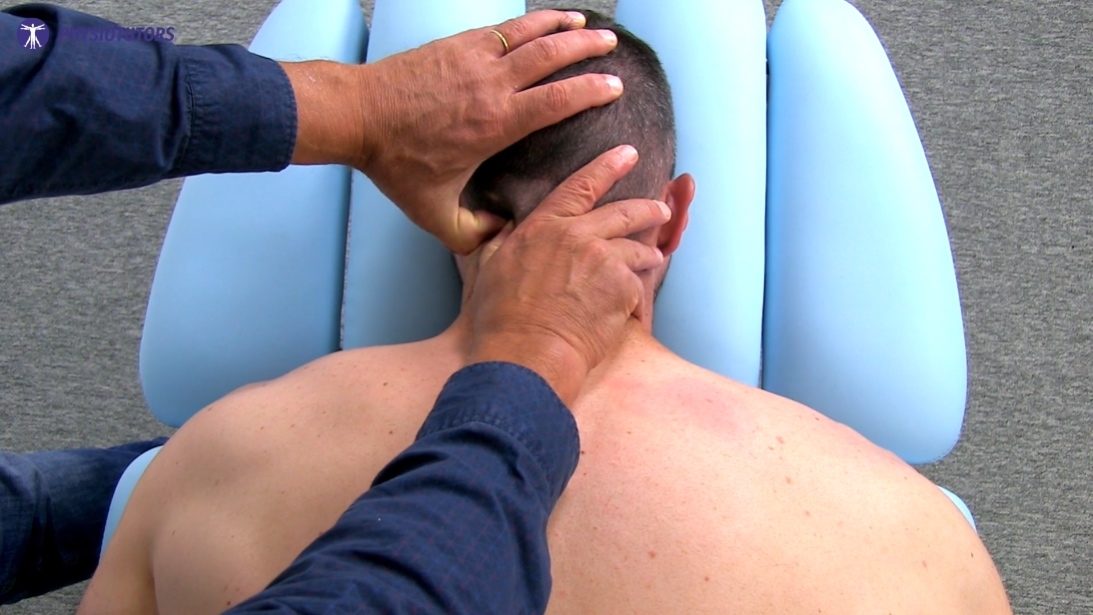
In summary, a combination of physical tests on cervical function ánd assessment of referred pain is useful. It may provide adequate information to the physiotherapist to have a rationale and strategy to treat patients with headaches.
Thanks a lot for reading!
René
References
Luedtke, K., Boissonnault, W., Caspersen, N., Castien, R., Chaibi, A., Falla, D., Fernández-de-las-Peñas, C., Hall, T., Hirsvang, J. R., Horre, T., Hurley, D., Jull, G., Krøll, L. S., Madsen, B. K., Mallwitz, J., Miller, C., Schäfer, B., Schöttker-Königer, T., Starke, W., … May, A. (2016). International consensus on the most useful physical examination tests used by physiotherapists for patients with headache: A Delphi study. Manual Therapy, 23, 17–24. https://doi.org/10.1016/j.math.2016.02.010
Liang, Z., Galea, O., Thomas, L., Jull, G., & Treleaven, J. (2019). Cervical musculoskeletal impairments in migraine and tension type headache: A systematic review and meta-analysis. Musculoskeletal Science and Practice, 42(April), 67–83. https://doi.org/10.1016/j.msksp.2019.04.007
Anarte-Lazo, E., Carvalho, G. F., Schwarz, A., Luedtke, K., & Falla, D. (2021). Differentiating migraine, cervicogenic headache and asymptomatic individuals based on physical examination findings: a systematic review and meta-analysis. BMC Musculoskeletal Disorders, 22(1), 1–18. https://doi.org/10.1186/s12891-021-04595-w
Rodríguez-Sanz, J., Malo-Urriés, M., Lucha-López, M. O., Pérez-Bellmunt, A., Carrasco-Uribarren, A., Fanlo-Mazas, P., Corral-De-Toro, J., & Hidalgo-García, C. (2021). Effects of the manual therapy approach of segments C0-1 and C2-3 in the flexion-rotation test in patients with chronic neck pain: A randomized controlled trial. International Journal of Environmental Research and Public Health, 18(2), 1–14. https://doi.org/10.3390/ijerph18020753
Dunning, J. R. (2011). Upper Cervical and Upper Thoracic Thrust Manipulation Versus Non-Thrust Mobilization in Patients With Mechanical Neck Pain: A Multi-Center Randomized Clinical Trial. Journal of Orthopaedic and Sports Physical Therapy, 42(1), 5–18. https://doi.org/10.2519/jospt.2012.3894
Castien, R., & De Hertogh, W. (2019). A Neuroscience Perspective of Physical Treatment of Headache and Neck Pain. Frontiers in Neurology, 10(March), 1–7. https://doi.org/10.3389/fneur.2019.00276
Hall, T., Briffa, K., Hopper, D., & Robinson, K. (2010). Reliability of manual examination and frequency of symptomatic cervical motion segment dysfunction in cervicogenic headache. Manual Therapy, 15(6), 542–546. https://doi.org/10.1016/j.math.2010.06.002
Watson, D. H., & Drummond, P. D. (2012). Head pain referral during examination of the neck in migraine and tension-type headache. Headache, 52(8), 1226–1235. https://doi.org/10.1111/j.1526-4610.2012.02169.x

René Castien
Dr. René Castien is a senior researcher at AmsterdamUMC & Author of the “Headache Treatment in Clinical Practice” Online Course
NEW BLOG ARTICLES IN YOUR INBOX
Subscribe now and receive a notification once the latest blog article is published.
